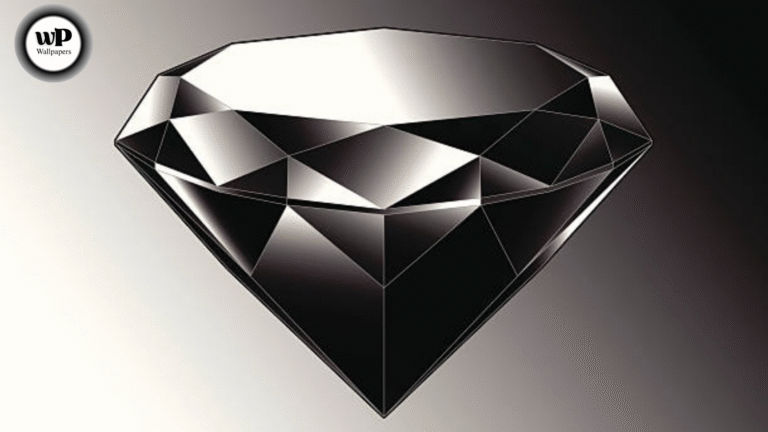Inkle loom weaving is a versatile craft that allows weavers to create narrow bands perfect for belts, straps, and trims. With a rich history and simple setup, inkle looms have become increasingly popular for creating beautiful and functional woven patterns. Whether you’re a beginner or a seasoned weaver, mastering inkle loom weaving patterns opens up creative opportunities to design intricate and stunning fabric pieces.
In this guide, we will explore everything you need to know about inkle loom weaving patterns, including basic techniques, popular patterns, troubleshooting tips, and advanced weaving techniques. Whether you’re making your first woven belt or an advanced geometric design, this guide will help you get started and improve your weaving skills in 2025.
What is Inkle Loom Weaving?
Understanding Inkle Loom Weaving
Inkle loom weaving is a traditional technique where narrow fabric strips are woven on a small, portable loom. Ideal for creating items like belts, sashes, straps, and trim, the inkle loom uses vertical warp threads and horizontal weft threads to produce intricate designs. Inkle looms are praised for their portability, ease of use, and ability to create small, detailed woven patterns.
History of Inkle Loom Weaving
The term “inkle” originates from Old English and refers to narrow, functional bands. Historically, inkle looms were used to create practical items such as harness straps and decorative belts. Over time, this craft has evolved into an art form that allows for a wide range of decorative designs and textile projects.
Why Use an Inkle Loom?
Inkle looms are favored by crafters for several reasons:
- Compact and Portable: Perfect for small spaces and travel-friendly.
- Quick Setup: Easy to warp, even for beginners.
- Creative Flexibility: Ideal for both simple and complex patterns.
Basic Techniques for Inkle Loom Weaving
How to Warp an Inkle Loom
Warping is the process of setting up the vertical threads (warp) on the loom. Properly warping the inkle loom is essential for creating even and consistent woven bands. Pay close attention to the spacing of your warp threads, as too much tension or uneven warping can affect the pattern.
Weaving with the Inkle Loom
After warping your loom, the weaving process begins. The horizontal threads (weft) are passed over and under the warp threads, creating your chosen pattern. For beginners, simple patterns like stripes are a great way to get started. With practice, you can experiment with more complex designs, such as chevrons or diamonds.
Finishing Your Inkle Loom Projects
Once your woven fabric is complete, it’s time to finish the edges to prevent fraying. This can be done by tying off the warp threads or using sewing techniques to secure the edges, depending on the look you want to achieve.
Popular Inkle Loom Weaving Patterns
Simple Stripes: A Beginner’s Favorite
Striped patterns are the most straightforward design for inkle loom weaving. By alternating colors of weft thread, you can create clean, bold stripes that are perfect for making belts, straps, and trims. Stripes are an excellent starting point for new weavers to practice the basic techniques.
Chevron Pattern: A Classic Design
The chevron pattern is a timeless favorite, characterized by zigzag shapes that create a dynamic visual effect. This pattern is achieved by adjusting the tension and alternating the warp threads, creating V-shaped lines across the woven fabric. The chevron design is perfect for creating stylish belts, bands, and other accessories.
Diamond Pattern: Intricate and Elegant
The diamond pattern is one of the most beloved advanced designs in inkle loom weaving. To create this design, you will need to adjust the warp threads carefully to produce diamond-shaped motifs across the fabric. This intricate design is ideal for creating sophisticated, one-of-a-kind woven pieces.
Hearts and Flowers: Whimsical Designs
For those looking to add a fun touch to their weaving, hearts and flowers are excellent patterns. These motifs are created by weaving simple shapes like hearts or flowers into your fabric. These patterns add a playful element to belts, bookmarks, or decorative trims.
Herringbone Pattern: Classic and Timeless
The herringbone pattern resembles the bones of a fish, creating a striking V-shape design. This pattern is a great way to add texture and elegance to your woven projects. It’s achieved by alternating the direction of the weft thread and adjusting the warp tension for a perfect herringbone effect.
Advanced Inkle Loom Weaving Patterns
Double-Faced Weaving: Reversible Designs
Double-faced weaving allows you to create patterns on both sides of your woven piece. This advanced technique involves weaving two layers of fabric simultaneously, with each side displaying a different pattern. Double-faced weaving is great for reversible belts or straps, offering two distinct looks in one piece.
Geometric Patterns: Bold and Striking
For experienced weavers, geometric patterns such as spirals, concentric circles, and zigzags provide a challenging yet rewarding weaving experience. These patterns often require careful manipulation of the warp tension and the use of different colored threads. Geometric designs are perfect for creating bold, modern accessories or artwork.
Color Changing Patterns: Adding Depth and Dimension
Introducing multiple colors into your inkle loom projects can add richness and depth to the design. By alternating colors in the warp or weft threads, you can create intricate multicolored patterns that range from subtle gradients to vibrant, bold motifs.
Troubleshooting Common Inkle Loom Weaving Issues
Uneven Tension: Fixing Warp Issues
Uneven tension in the warp threads can cause the fabric to look uneven or puckered. To solve this issue, regularly check the tension and adjust it as needed. If necessary, reward the loom to ensure the threads are evenly spaced and tensioned.
Fraying Weft Threads: How to Prevent It
If the weft thread is fraying, consider using a stronger or thicker yarn for the weft. You can also apply a small amount of fabric glue to the end of the weft thread before starting the weaving process to prevent unraveling.
Pattern Distortion: Why It Happens
Pattern distortion typically occurs when the warp threads are misaligned or the tension is inconsistent. Double-check your warp setup, ensure the threads are properly aligned, and adjust the tension to maintain consistent patterns throughout your weaving project.
Benefits of Inkle Loom Weaving
Creative Flexibility
Inkle loom weaving allows you to express your creativity through a variety of designs, from basic stripes to intricate geometric shapes. You can experiment with different colors, textures, and patterns to create truly unique woven pieces.
Portability and Convenience
The compact size of the inkle loom makes it perfect for taking on the go. You can easily carry it to crafting classes, social gatherings, or even on vacation. Its small size makes it ideal for those with limited space.
Perfect for Small Projects
If you’re interested in small-scale projects, the Inkle Loom is an excellent choice. It’s great for creating belts, bookmarks, straps, or decorative trim for clothing and accessories.
Table: Common Inkle Loom Weaving Terms
| Term | Definition |
| Warp | The vertical threads that are set up on the inkle loom. |
| Weft | The horizontal threads are woven over and under the warp threads. |
| Shuttle | A tool used to pass the weft thread through the warp threads. |
| Tension | The tightness or looseness of the warp threads, affects the final pattern. |
| Patterning | The process of creating designs by manipulating the warp and weft threads. |
Conclusion
Inkle loom weaving offers endless possibilities for creative expression and practical projects. Whether you’re looking to create functional accessories like belts or experimenting with intricate geometric patterns, mastering inkle loom weaving patterns will enhance your skills and allow you to make beautiful, one-of-a-kind woven pieces. Grab your inkle loom, choose a pattern, and start weaving today!
FAQs
- What is an inkle loom used for?
- An inkle loom is used to weave narrow bands of fabric, ideal for making belts, straps, trim, and other functional or decorative items.
- Can I create complex patterns on an inkle loom?
- Yes! You can create intricate patterns like double-faced weaving and geometric designs with careful planning and technique.
- How do I change colors on an inkle loom?
- You can change colors by alternating the weft threads or using different colored warp threads for more complex patterns.
- Is inkle loom weaving suitable for beginners?
- Absolutely! The inkle loom is ideal for beginners because of its simple setup and wide range of basic patterns to start with.
- What are the best yarns for inkle loom weaving?
- Cotton, wool, and silk are great options for inkle loom weaving, depending on your desired texture and finish.
- How do I finish the edges of my inkle loom project?
- You can tie off the warp threads or sew the edges to prevent fraying and give your project a polished look.
- What are some easy patterns to try for beginners?
- Start with simple stripes or chevrons to get comfortable with the weaving process before tackling more complex designs.
- Can I weave belts on an inkle loom?
- Yes, inkle looms are perfect for weaving belts, sashes, and other narrow fabric items.
- How do I fix tension issues in my weaving?
- Ensure your warp threads are evenly spaced and regularly check the tension throughout the process to maintain consistency.
- Can I create decorative pieces on an inkle loom?
- Yes, inkle looms are great for creating decorative pieces such as bookmarks, straps, and trims for clothing or home décor.



